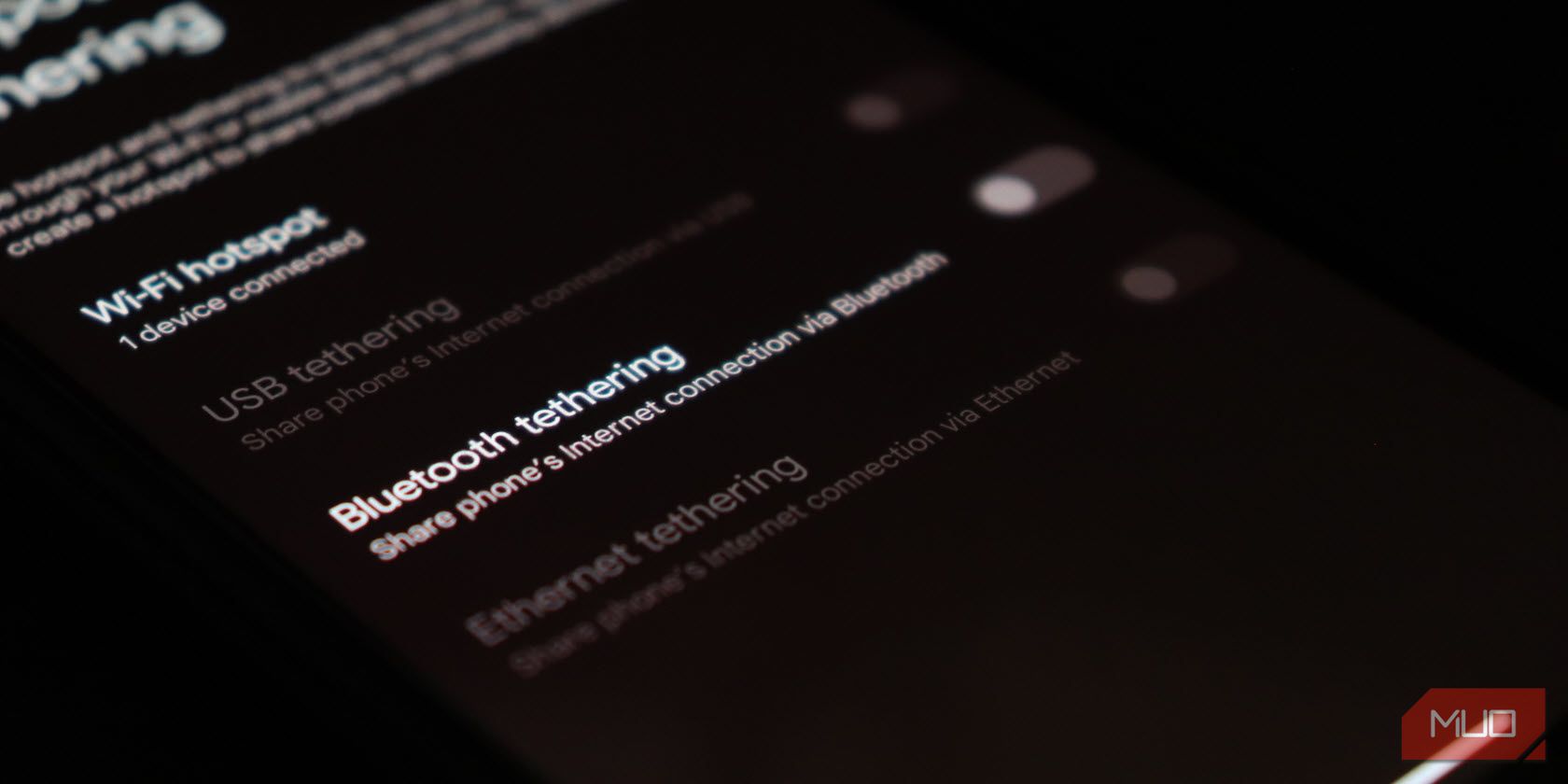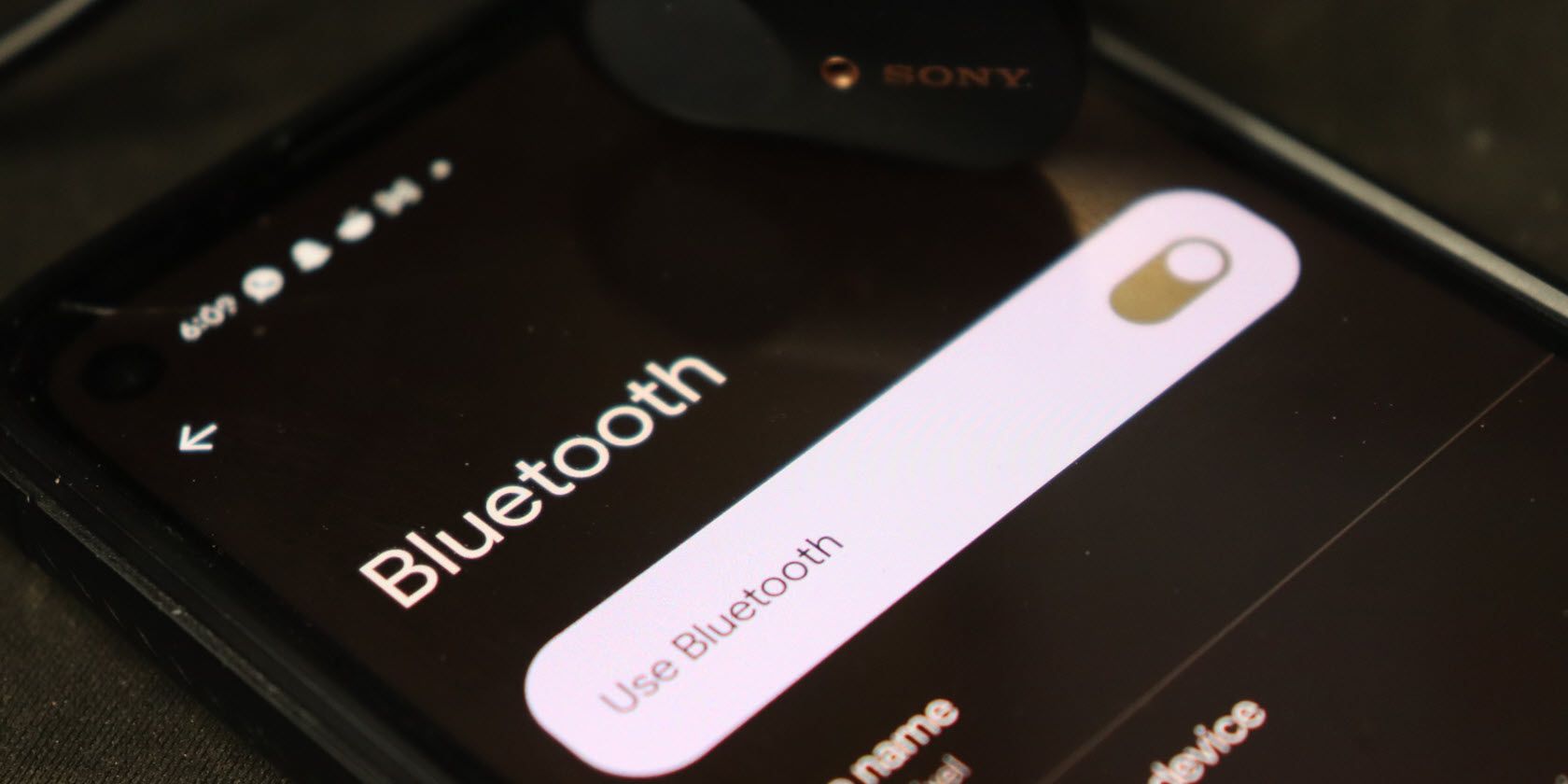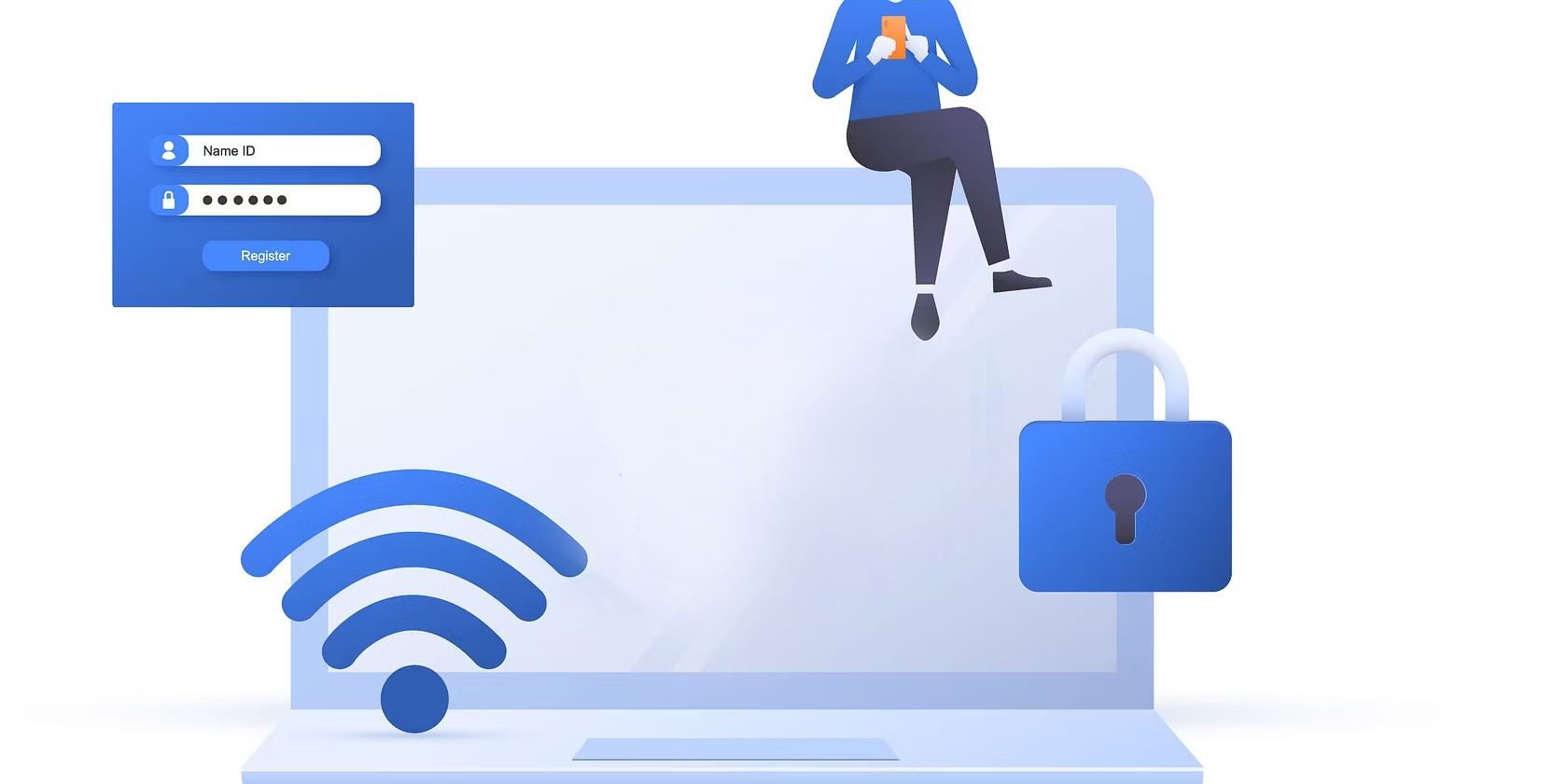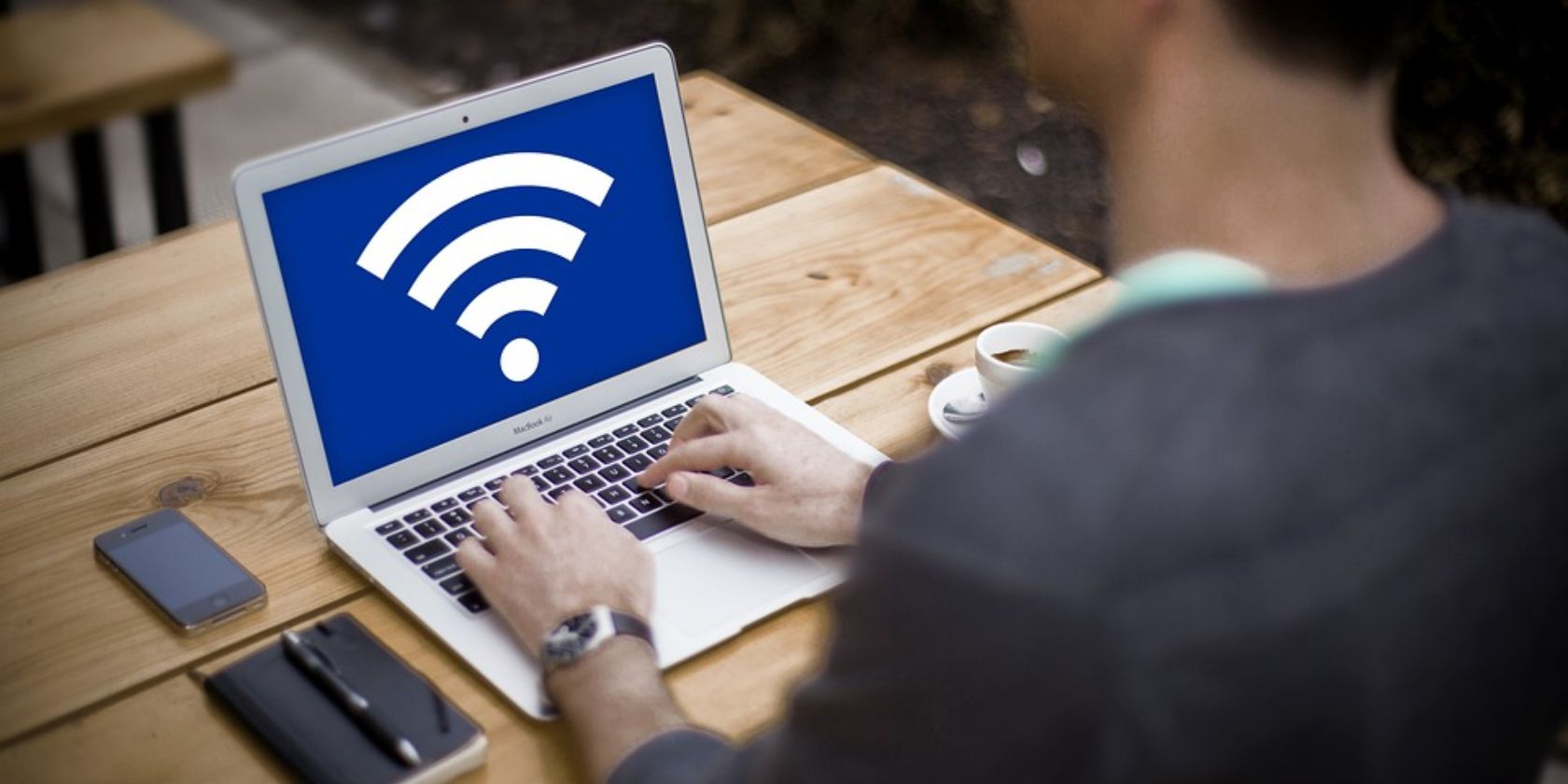Bluetooth is one of the most commonly used data transmission protocols. It has undergone multiple revisions and advancements, making it a good choice for connecting peripherals. However, it might not be suitable for every type of data transfer.
Why Is Bluetooth Tethering So Slow?
In the context of an internet connection, Bluetooth tethering will limit your bandwidth and increase your latency. The reason behind this is that Bluetooth wasn't initially designed as a means to transfer internet packets over the air.
Bluetooth's Basic Rate (BR) is 1 Mbps. Bluetooth 2's Enhanced Data Rate (EDR) comes in between 2-3 Mbps, and last but not least, Bluetooth 3 with High Speed (HS) data rates comes in at a maximum of 24 Mbps.
When you compare this to Wi-Fi, the difference in data transfer speed becomes quite obvious. Here are the speeds of the most basic a/b/g/n Wi-Fi standards.
- IEEE 802.11a/g: 54 Mbps
- IEEE 802.11b: 11 Mbps
- IEEE 802.11n: 600 Mbps
- IEEE 802.11ac: 1,400 Mbps
- IEEE 802.11ax: Up to 12,000 Mbps
As you can see, Wi-Fi is much faster when it comes to data transmission as compared to Bluetooth. In addition, Wi-Fi connections allow for far more bandwidth, giving you access to faster wireless internet and keeping your latency down, at least compared to Bluetooth.
Bluetooth Tethering vs. Wi-Fi Tethering
Tethering is the term that describes when you broadcast your phone's network signal using Bluetooth, Wi-Fi, or a USB connection to connect a compatible device and use your phone's internet plan to access the internet on said device. Since the three connections use different protocols, they are inherently different.
While Wi-Fi and Bluetooth do have some similar applications, such as transferring files, printing, or in this case, setting up networks, Wi-Fi was meant as a replacement for high-speed cabling for general local area networks (LANs).
Bluetooth, on the other hand, was intended for portable equipment and their applications. It is a replacement for cabling in personally carried equipment or accessories. Hence, while the standard 2-3 Mbps Bluetooth data rate is fine for listening to music using your Bluetooth headphones, it's no match for Wi-Fi for transmitting internet data.
Wi-Fi is also access point centered, which means it has an asymmetrical client-server connection where all the traffic is routed through the access point. In the case of tethering, this is your phone. It allows multiple compatible devices to connect to a single access point, which makes a lot of sense and offers more practical usage regarding internet sharing. This is compared to a Bluetooth connection, which is usually symmetrical, meaning only two devices can communicate at a time.
Another major advantage of using Wi-Fi tethering is the enhanced security it provides. USB tethering is the most secure between Wi-Fi, Bluetooth, and USB since you're not broadcasting a public SSID that anyone can connect to. But if you're looking for a wireless option or need to connect multiple devices, you will have to use Wi-Fi.
Most phones support WPA2-Personal Wi-Fi encryption for tethering connections, which is great considering Bluetooth traffic can be easily captured. Additionally, as mentioned above, you also get additional features like Instant Hotspot on iPhones which lets you bypass having to enter a Wi-Fi password as your Mac will automatically connect to your hotspot. Do keep in mind that this requires both devices to be logged into the same Apple ID, though. If you're on Android, you can connect by scanning a QR code instead of entering a password.
However, one significant advantage that Bluetooth has over Wi-Fi is its power consumption. A Bluetooth connection uses far less power than a Wi-Fi one, which is why the former is still seeing development, and manufacturers aren't racing to make accessories like headphones, speakers, and peripherals that connect over Wi-Fi instead of Bluetooth. This is why even certified Hi-Res audio devices still use Bluetooth.
Which Tethering Option Should You Choose?
Wi-Fi tethering is by far the best option here. Not only is it quite convenient, but it's also arguably the fastest and allows you to connect multiple devices to the hotspot at once. On the other hand, Bluetooth tethering, while easy on your phone's battery, only allows one connection at a time, and the same goes for USB.
Since USB tethering works by establishing a direct, wired link between your computer and phone, it's pretty much unusable on any other device that can't directly connect to your phone over a USB connection. In most cases, you'll use USB tethering with your laptop on the go as a backup measure if Wi-Fi or Bluetooth tethering doesn't work.
When Should You Use Bluetooth Tethering?
Bluetooth tethering only makes sense when you can't use Wi-Fi or need to save on battery life, as a Bluetooth tethering connection consumes far less battery than Wi-Fi. As mentioned above, Bluetooth was built from the ground up to strike a balance between transmitting enough data at a sufficient speed and not drawing too much power.
Although, since you can only use one device at a time when it comes to Bluetooth tethering, you might as well bite the bullet and use USB tethering instead. That said, USB tethering won't work with every device (or without a cable), which leaves you with Bluetooth tethering as a backup wireless internet option if you can't use Wi-Fi for whatever reason.
Bluetooth Tethering Isn't the Best Choice
Just because Bluetooth tethering can give you an internet connection doesn't mean it's the best. It's usually quite slow compared to Wi-Fi or USB tethering and only allows one device to connect. Bluetooth tethering isn't as secure as Wi-Fi or USB, either.
However, using Bluetooth has a massive battery-saving advantage, meaning a Bluetooth tethering option can save the day if you're short on battery. Of course, it won't be the fastest, most convenient, or even the most secure, but it's wireless, and you can still access the internet.




